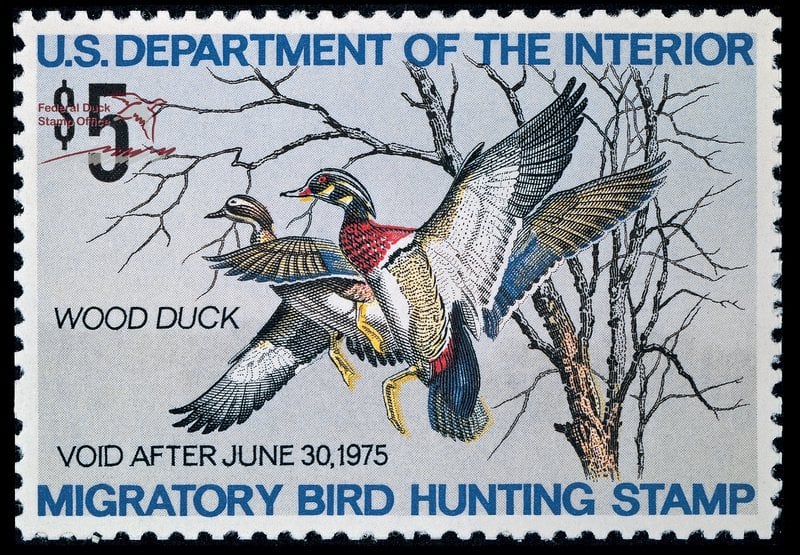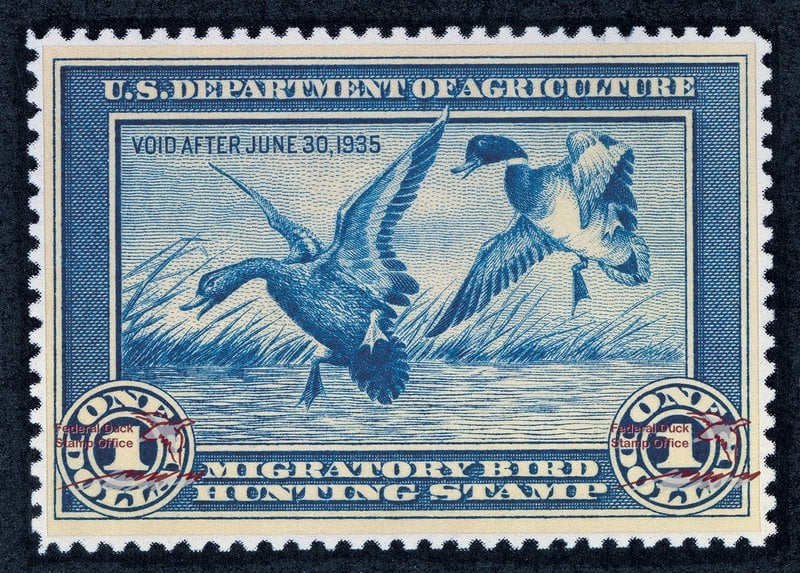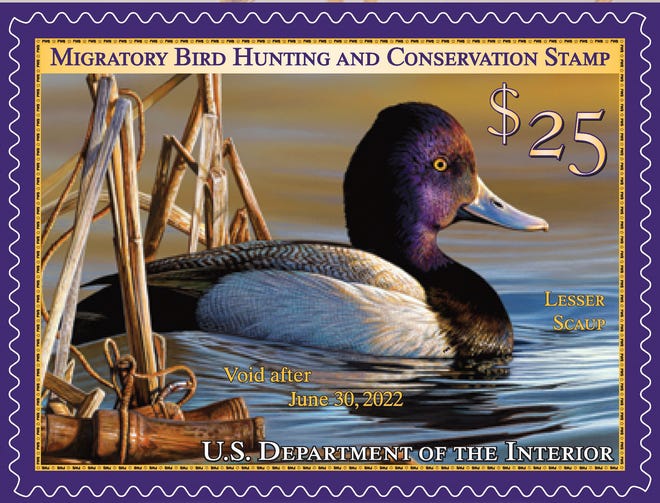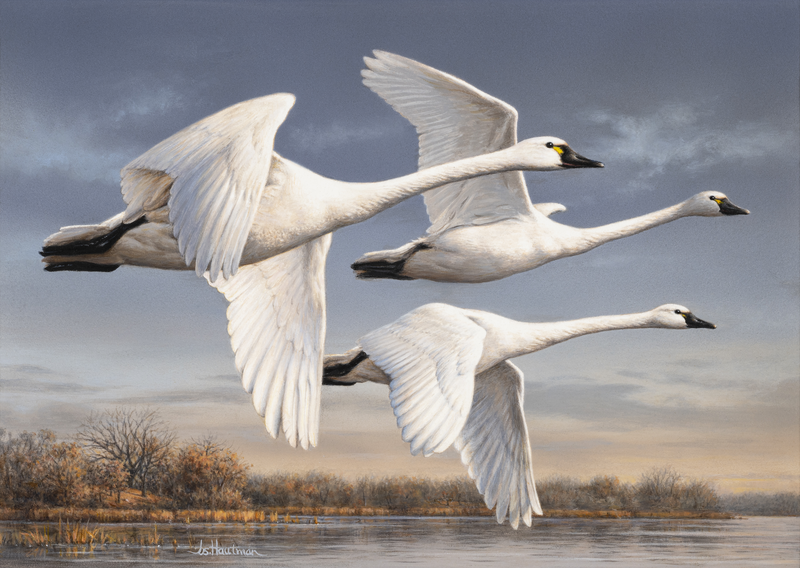Art & Exhibitions
The Surprising History of the Duck Stamp Takes Wing in a Museum Show
It's the only art contest run by the U.S. government.

From the vast estuary at Chesapeake Bay to the meandering rivers of the prairies and the marshy shores of the Great Lakes, the continental United States provides habitats galore for waterfowl. Thirty-five million in all, these birds span migrators and residents, dabbers and divers, commonplace and gravely endangered.
All have benefitted from the Migratory Bird Hunting and Conservation Stamp, better known as the Duck Stamp. Introduced in 1934 by President Franklin D. Roosevelt, it’s an annual levy on waterfowl hunters, 98 percent of which funds the preservation of wetland habitats. To date, sales of the license have raised $1.2 billion, preserving an area the size of Massachusetts.
Since 1949, the government has invited artists, professional and amateur alike, to submit original, hand-drawn designs for a corresponding postage stamp, which are judged by a panel—“no photographs or computer-generated art,” the U.S. Fish & Wildlife Service noted. It’s the only art competition run by the U.S. government, and this year it will take place in front of a live audience at the Bruce Museum in Greenwich, Connecticut.

The First Duck Stamp Design by Jay N. “Ding” Darling. Photo: US Fish and Wildlife Service.
Over two days, September 19-20, spectators at the Federal Duck Stamp Art Contest will watch a rapid-fire in-or-out round, followed by a ranking of the remaining entries. The artist’s prize? A pane of stamps signed by the Secretary of the Interior, not to mention considerable bragging rights for winning what the museum calls the “Super Bowl of Wildlife Art.”
The contest is tied to “Conservation Through the Arts: Celebrating the Federal Duck Stamp,” an exhibition at the museum that traces nine decades of winning stamp designs and the environmental culture surrounding them.

Richard Clifton’s winning entry to the 2020 Duck Stamp contest, depicting a Lesser Scaup and a lost duck call. Image ©U.S. Fish and Wildlife Service.
Fresh from a $67 million renovation and expansion, the Bruce is a fitting venue to survey the Duck Stamp given that its collection bridges fine art (from Greek vases to Impressionist paintings) and natural history (from dinosaur skulls to taxidermy loons). This is one reason Richie Prager, whose unrivaled collection of prints, paintings, and Duck Stamp ephemera forms the bulk of the exhibition, pledged it to the museum in 2022. “It’s that convergence of art and science,” Prager said.
Sixty of the winning Duck Stamp entries from past years are on show, beginning with the first, a 1934 scene of landing mallards by the Pulitzer Prize-winning cartoonist Jay Norwood. Other notable entries include those from David Maas, considered one of America’s great wildlife artists; Robert Hautman’s 1992 Spectacled Eider, which sees the Alaska native soaring through dramatic skies; and Edward Bierly’s serene scene of Ross Geese, the first Duck Stamp to be produced in full color.

Joe Hautman, Tundra Swans (2023). Photo: Bruce Museum.
To create context, the museum draws on hand-carved decoys from its collection, such as those made by Connecticut master carvers in the 19th century; a range of waterfowl taxidermy; and an interactive display that introduces species including Red-breasted Mergansers, Surf Scoters, and Brants through their behaviors.
“Seeing the style of etchings, drawings and paintings evolve over time is fascinating,” said Daniel Ksepka, the museum’s curator of science. “Most important of all is the success of the program as a conservation vehicle—it almost certainly saved some species from extinction in the first few decades and continues to conserve millions of acres today.”
“Conservation Through the Arts: Celebrating the Federal Duck Stamp” is on view at the Bruce Museum, 1 Museum Dr, Greenwich, Connecticut, through February 9, 2025.





